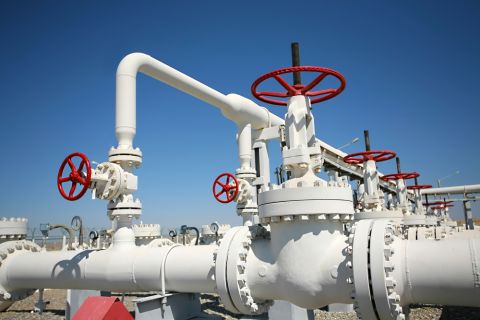George Soros testified today to a Congressional committee on oil prices. Following are leading points, and attached is his entire statement. Worthy of note: Soros' comments are despite that Soros Funds is invested in upstream E&P, particularly unhedged, small producers, via private-equity investments by Pine Brook Road Partners, led by Howard Newman, formerly of Warburg Pincus.
Soros' introductory comments:
"...As I understand it, you are seeking an explanation for the recent sharp rise in the oil futures market and in gasoline prices. In particular, you want to know whether this rise constitutes a bubble and, if it is a bubble, whether better regulation could mitigate the harmful consequences.
"In trying to answer these questions, I must stress that I am not an expert in oil markets. I have, however, made a life-long study of bubbles. So I will briefly outline my theory of bubbles—which is at odds with the conventional wisdom—and then discuss the current situation in the oil market. I shall focus on financial institutions investing in commodity indexes as an asset class because this is a relatively recent phenomenon and it has become the 'elephant in the room' in the futures market.
"According to my theory, every bubble has two components: a trend based on reality and a misconception or misinterpretation of that trend. Financial markets are usually very good at correcting misconceptions. But occasionally misconceptions can lead to bubbles because they can reinforce the prevailing trend and by doing so they also reinforce the misconception until the gap between reality and the market’s interpretation of reality becomes unsustainable. The misconception is recognized as a misconception, disillusionment sets in, and the trend is reversed. A decline in the value of collaterals provokes margin calls and distress selling causes an overshoot in the opposite direction. The bust tends to be shorter and sharper than the boom that preceded it.
"This sequence contradicts the prevailing theory of financial markets, which is based on the belief that markets are always right and deviations from equilibrium occur in a random manner. The various synthetic financial instruments like CDOs and CLOs which have played such an important role in turning the subprime crisis into a much larger financial crisis have been built on that belief.
"But the prevailing theory is wrong. Deviations can be self-reinforcing. We are currently experiencing the bursting of a housing bubble and, at the same time, a rise in oil and other commodities which has some of the earmarks of a bubble. I believe the two phenomena are connected in what I call a super-bubble that has evolved over the last quarter of a century. The misconception in that super-bubble is that markets tend toward equilibrium and deviations are random.
"So much for bubbles in general. With respect to the oil market in particular, I believe there are four major factors at play which mutually reinforce each other.
"First, the increasing cost of discovering and developing new reserves and the accelerating depletion of existing oil fields as they age. This goes under the rather misleading name of 'peak oil.'
"Second, there is what may be described as a backward-sloping supply curve. As the price of oil rises, oil-producing countries have less incentive to convert their oil reserves underground, which are expected to appreciate in value, into dollar reserves above ground, which are losing their value. In addition, the high price of oil has allowed political regimes, which are inefficient and hostile to the West, to maintain themselves in power, notably Iran, Venezuela and Russia. Oil production in these countries is declining.
"Third, the countries with the fastest growing demand, notably the major oil producers, and China and other Asian exporters, keep domestic energy prices artificially low by providing subsidies. Therefore rising prices do not reduce demand as they would under normal conditions.
"Fourth, both trend-following speculation and institutional commodity index buying reinforce the upward pressure on prices. Commodities have become an asset class for institutional investors and they are increasing allocations to that asset class by following an index buying strategy. Recently, spot prices have risen far above the marginal cost of production and far-out, forward contracts have risen much faster than spot prices. Price charts have taken on a parabolic shape which is characteristic of bubbles in the making.
"So, is this a bubble? The answer is that the bubble is super-imposed on an upward trend in oil prices that has a strong foundation in reality. The first three factors I mentioned are real and would persist even if speculation and commodity index buying were eliminated. In discussing the bubble element I shall focus on institutional buying of commodity indexes as an asset class because it fits so perfectly my theory about bubbles."
For his entire testimony, see the PDF: sorosoilpricetestimony6308.pdf
–Nissa Darbonne, Executive Editor, Oil and Gas Investor, A&D Watch, Oil and Gas Investor This Week, www.OilandGasInvestor.com; ndarbonne@hartenergy.comRecommended Reading
Ozark Gas Transmission’s Pipeline Supply Access Project in Service
2024-04-18 - Black Bear Transmission’s subsidiary Ozark Gas Transmission placed its supply access project in service on April 8, providing increased gas supply reliability for Ozark shippers.
Kinder Morgan Sees Need for Another Permian NatGas Pipeline
2024-04-18 - Negative prices, tight capacity and upcoming demand are driving natural gas leaders at Kinder Morgan to think about more takeaway capacity.
Balticconnector Gas Pipeline Will be in Commercial Use Again April 22, Gasgrid Says
2024-04-17 - The Balticconnector subsea gas link between Estonia and Finland was damaged in October along with three telecoms cables.
Targa Resources Ups Quarterly Dividend by 50% YoY
2024-04-12 - Targa Resource’s board of directors increased the first-quarter 2024 dividend by 50% compared to the same quarter a year ago.



